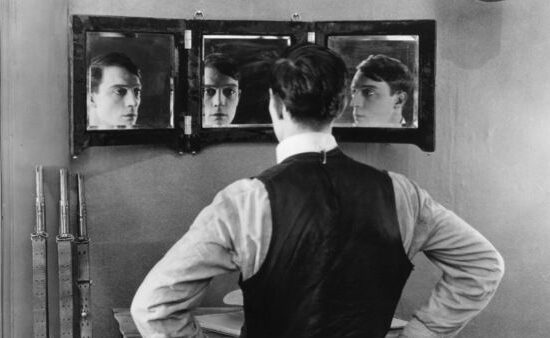
The Red Power Movement of the 1960s and 70s was a time of profound social change and progress for American Indians in the United States and Canada.
The music of Buffy Sainte-Marie was the score that helped propel the movement forward.
In her outspokenness about the injustices facing Indigenous people, she also sang for peace, the environment, women and children—believing that art can have impact and make a difference.
She was driven by her desire for the masses to be informed about the issues, so that through being enraged they would be engaged, a mantra that animated all aspects of those turbulent times. Of Cree heritage from Saskatchewan, Canada, in her 20s, Sainte-Marie was touring, performing and developing a songbook that would reverberate across audiences.
But it was the songs “Universal Soldier,” “Now That the Buffalo’s Gone,” “Bury My Heart at Wounded Knee” and “My Country Tis of Thee” that expressed the anguish and rage from the colonial oppression North American Indigenous people were surviving. Her songs addressed American Indian causes and issues, thrusting her into the spotlight of advocacy for the rights of Indigenous peoples, while offering inspiration and hope.
But a singer-songwriter is just the tip of the iceberg of who Buffy Sainte-Marie actually is.
Sainte-Marie graduated with degrees in oriental philosophy, religion and teaching. She also holds a doctorate in fine arts. The human condition was a common theme that defined the folk music scene she was immersed in. But for an Indigenous woman making her way in the 1960s, speaking truth to power was often easier said than done and could be costly—this was case for Sainte-Marie’s career.
Sainte-Marie leveraged her education, voice and visibility to champion political causes, supporting the American Indian Movement (AIM) and often lent her name to performance engagements. She actively funded the occupation of Alcatraz Island in San Francisco (1969-71) through performances and shows [Editor’s Note: You can read more about the history and legacy of the occupation of Alcatraz here].
Her passion and outspoken support for Indigenous causes coupled with her association with AIM worked against her as she became blacklisted in the United States.
Because she was singing about the political realities of ongoing colonial occupation of Indigenous lands and abuses of the federal government, radio stations were “strongly urged” by both Democratic and Republican administrations not to play her music. Unaware for decades of the FBI surveillance and radio blacklisting that severely limited her career and ability to secure public performance engagements, she took these career dips as opportunities to create, educate and influence in other ways and mediums. She founded the Nihewaan Foundation for Native American Education and established the Cradleboard project in the mid-1990s, which enabled educational partnerships and opportunities between Indigenous and non-Indigenous communities and developed culturally-centered school curriculum. Her activism in education and providing scholarship support for Indigenous students has led to investments in notable education activists such as Lionel Bordeaux, founding member of the American Indian Tribal College Consortium (AIHEC).
In her commitment to Indigenous youth during the 1960s, Sainte-Marie worked closely with the National Indian Youth Council who worked to battle racism. These young activists organized conferences, gave speeches and inspired other notable Natives such as Vine Deloria, Jr. and Hank Adams. Collectively, activists and influential advocates demanded accountability from what many saw as the highly paternalistic Bureau of Indian Affairs.
Because her approach to activism was deeply rooted in her core beliefs about rights and justice for American Indians, she used the spotlight to center Indigenous issues and followed through until solutions were reached.
From 1976 to 1981, Sainte-Marie was a cast member of the television series “Sesame Street.” The political act of being visually sovereign, often defined as re-imagining, creating, reclaiming and supporting cultural spaces as determined by Indigenous people, is a concept Sainte-Marie not only practices, but encourages.
Many of us working for accurate Native media representation today, for example, owe homage to Sainte-Marie, who in 1968 when invited to play a lead role in “The Virginian,” demanded that all the Indigenous roles be played by Indigenous people. Working with Jay Silverheels and Louise Red Elk from the Indian Actors Workshop, casting agents filled the Native roles with Native actors, which was precedent-setting for the times.
Sainte-Marie’s activism was typically vocal, but often subtle in its approach.
For instance, her feminist views on intimate relationships were unheard of during the time with “Until It’s Time for You to Go,” which has been covered by artists such as Neil Diamond, Barbra Streisand and Elvis Presley.
She has stood up to governments, managers, studio executives and even Elvis Presley himself, who otherwise loved her music. She denied Presley’s management requests to own the publishing rights for “Until It’s Time for You to Go.” Despite Sainte-Marie’s refusals, Presley nevertheless recorded the song an astonishing nine times. Encouraging artists to understand the business side of the entertainment industry has been part of her mission as an artist. While she has witnessed some of the worst parts of show business—seeing it as an “extension of entrepreneurial colonialism’’ as articulated in the authorized biography of Buffy Sainte-Marie by Andrea Warner—she has stood firm and persevered against toxic masculinity.
From music and TV to education, Sainte-Marie’s artistry, joy and passionate activism and optimism have been pivotal in bringing hope and change to humanity. Sainte-Marie’s unique form of activism changed perceptions of Indigenous people, and she continues to champion efforts to end violence against Indigenous women and speak up for Indigenous rights.

















